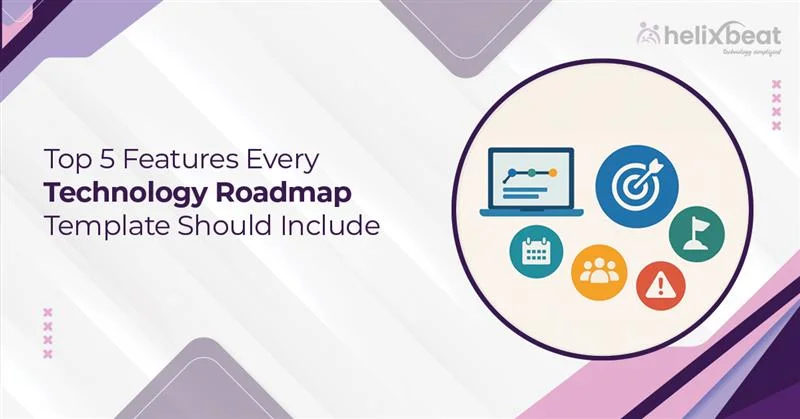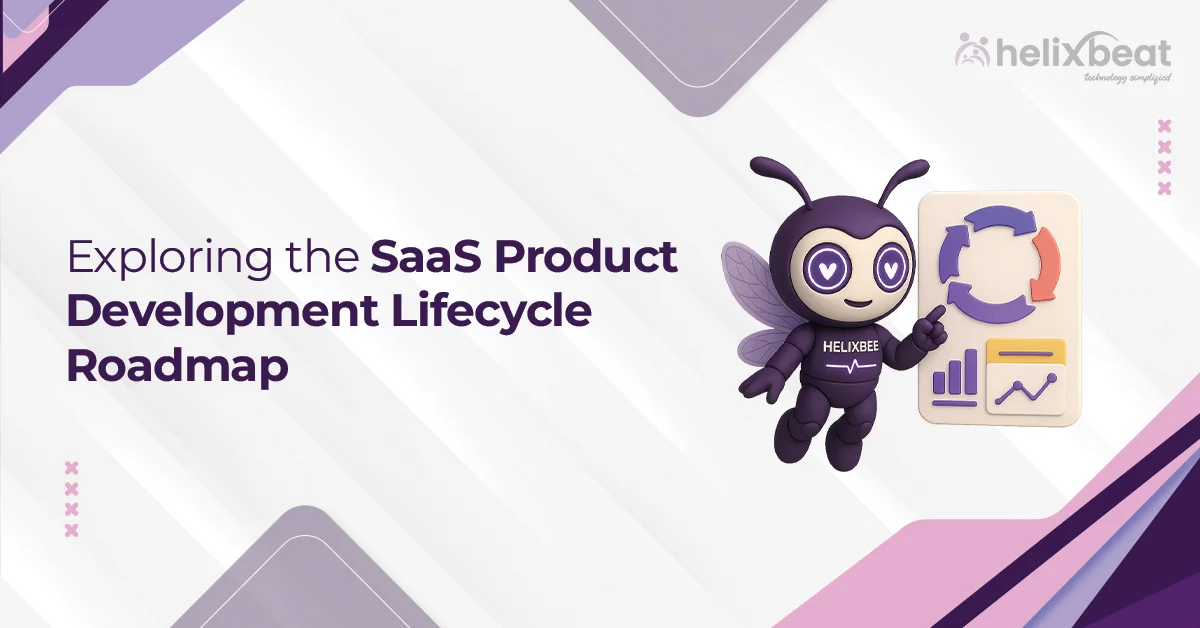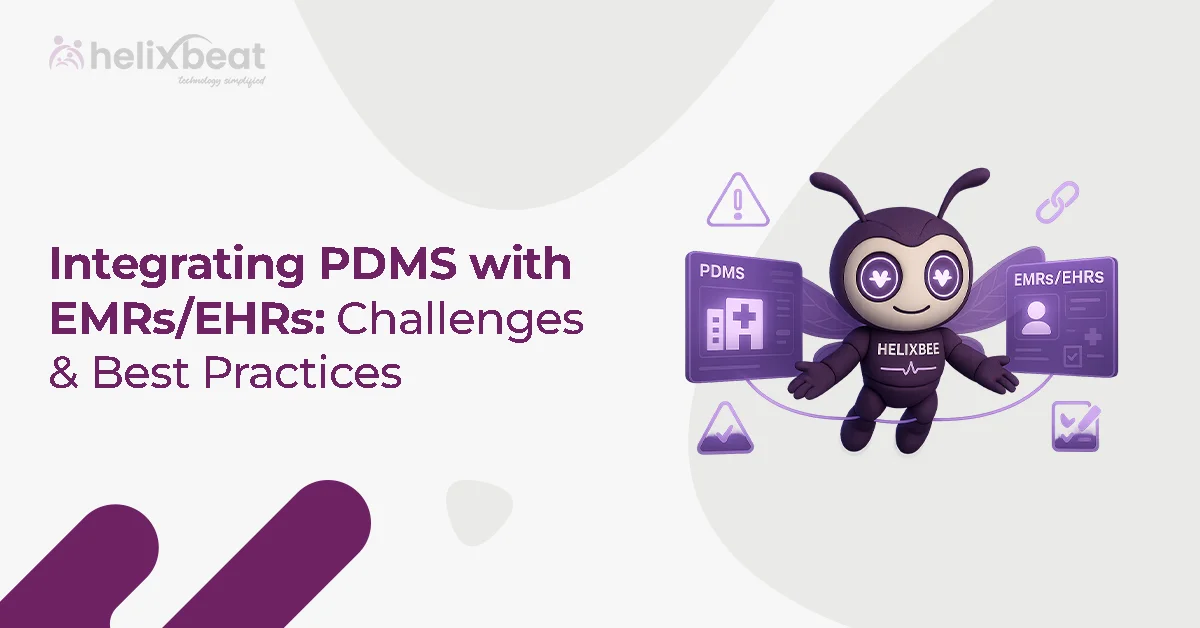With technology moving so quickly, it’s important to plan for what’s next. In this context, a well-structured technology roadmap serves as a strategic guide and helps organizations align their technology initiatives with business goals. Whether you’re running a small startup or managing a big enterprise, having the right technology roadmap template can make a significant difference.
But what makes a technology roadmap template good? Let’s look at the top five features every technology roadmap template should have to keep your projects organized, your team informed, and your goals clear.

Table of Contents
1. Clear Goal and Vision Alignment
At the heart of any technology roadmap template lies a clear articulation of goals and vision. Without this, roadmaps risk becoming disjointed plans lacking purpose.
Why It Matters
Technology investments should always tie back to overarching business objectives. Whether you aim to improve customer experience, streamline operations, or drive innovation, the roadmap must demonstrate how each technology initiative supports these objectives.
Example
Imagine a retail company whose vision is to become the easiest place for customers to shop online. Their technology roadmap might include projects like launching a mobile app, improving website speed, and integrating payment options. Each of these projects directly supports the goal of making shopping easier for customers.
What the Template Should Include
- Vision Statement Section: A short paragraph stating the company’s technology goals, such as “Create a seamless and fast online shopping experience.”
- Goal Mapping: A way to link each tech project (like building the mobile app) to the business goal (better customer experience).
- Priority Indicators: Marks showing which projects are most important, so teams know where to focus first.
By including these elements, your technology roadmap becomes a clear guide, showing why each step matters and how it helps the company reach its vision.
2. Timeline with Milestones and Deliverables
A technology roadmap template without a timeline is like a map without a destination or route. The timeline provides a temporal structure that guides teams and stakeholders through the journey from start to finish.
Why It Matters
Time-bound plans keep everyone aligned on deadlines, dependencies, and expectations. It also helps in tracking progress and adjusting plans as projects evolve.
What the Template Should Include
- Phased Timeline View: Visual segments that represent different phases like research, development, testing, deployment, and maintenance.
- Milestones: Clear markers for key achievements, such as completing a prototype, launching a feature, or completing integration.
- Deliverables Section: Detailed descriptions of what outputs or results are expected at each milestone.
- Flexibility for Updates: Since tech projects often shift, the timeline section should allow for easy updates or shifts without losing clarity.
An intuitive timeline layout within a technology roadmap template gives teams a structured path and enhances communication with stakeholders by setting clear expectations.
3. Stakeholder Roles and Responsibilities
Technology projects often span multiple teams, departments, and even external partners. Therefore, defining roles within the roadmap prevents confusion and keeps accountability in place.
Why It Matters
Knowing who is responsible for what accelerates decision-making and reduces bottlenecks. It also promotes ownership and helps identify resource gaps early.
What the Template Should Include
- Role Assignment Areas: Spaces to assign roles such as Project Manager, Lead Developer, QA Specialist, or Business Analyst for each initiative or milestone.
- Contact Information or Team Links: Easily accessible contact details or team page links encourage smooth collaboration.
- Decision Authority Levels: Sections that define who can approve changes, allocate resources, or escalate issues.
- Collaboration Notes: Areas for special remarks on dependencies or cross-team interactions.
By integrating stakeholder roles into your technology roadmap template, you create a living document that organizes team efforts for maximum efficiency.
4. Risk Management and Contingency Planning
No technology journey is free from risks. Unexpected delays, technical hurdles, or changing market conditions can disrupt even the best plans. Hence, including a risk management feature in the template prepares your team to face challenges head-on.
Why It Matters
Proactively identifying potential risks and outlining contingency steps reduces project downtime and minimizes negative impacts.
What the Template Should Include
Risk Identification Section: A place to list possible risks, categorized by type, such as technical, operational, financial, or regulatory.
Impact and Likelihood Ratings: A simple system (e.g., low, medium, high) to gauge the severity and probability of each risk.
Mitigation Strategies: Suggested actions to reduce or manage the risks.
Contingency Plans: Backup plans in case a risk materializes, including alternative solutions or timelines.
A technology roadmap template equipped with risk management elements helps teams stay prepared and agile, promoting confidence among stakeholders.
5. Resource Allocation and Budget Overview
Technology initiatives require investment—not just money, but human resources, tools, and infrastructure. Thus, mapping out these resources clearly within the roadmap assists in realistic planning and prevents resource-related roadblocks.
Why It Matters
Visibility into resource allocation supports better budgeting, avoids overcommitment, and helps prioritize projects according to available assets.
What the Template Should Include
- Resource Listing: Identification of the required personnel, software, hardware, and other assets for each project or phase.
- Budget Sections: Space to outline estimated and actual costs, allowing for budget tracking and adjustments.
- Capacity Planning: Features to indicate resource availability or constraints, helping with workload balancing.
- Dependency Indicators: Highlighting where resource shortages could delay deliverables, promoting proactive planning.
Incorporating resource and budget data into your technology roadmap template empowers stakeholders to make informed decisions and maintain project momentum.
Bonus Feature: Visual and Customizable Layout
While not always listed among the top features, a visually engaging and customizable layout greatly improves the usability and impact of any technology roadmap template.
Why It Matters
A well-designed roadmap is easier to understand and share. It enables different teams to customize the roadmap without compromising overall coherence.
What the Template Should Include
- Color-Coded Sections: For quick identification of project phases, priorities, or risk levels.
- Drag-and-Drop Functionality: Makes adjusting timelines or priorities seamless.
- Interactive Elements: Clickable items that link to detailed project documents or dashboards.
- Export and Sharing Options: Easy ways to share the roadmap with stakeholders via PDF, presentations, or collaborative platforms.
A visually intuitive technology roadmap template encourages active use, collaboration, and keeps teams motivated.
Why Businesses Choose Helixbeat for IT Consulting Services
Every business faces its own unique challenges. Whether you’re navigating cloud adoption, optimizing legacy systems, or exploring cutting-edge technologies like AI, IoT, etc., we bring clarity to complexity.
Our consultants are tech-savvy problem-solvers who work closely with your teams to identify gaps, remove roadblocks, and deliver customized solutions. Our IT Consulting Services cover:
- Digital Transformation Roadmaps
- Cloud Strategy & Migration
- Enterprise Architecture
- Cybersecurity Frameworks
- Infrastructure Modernization
- Software Development Consulting
- Data Strategy & Business Intelligence
From early-stage planning to implementation support, we guide you through every decision — translating tech into tangible business value. Contact us today and get a free consultation with our IT strategy experts.
FAQs
1. How do I choose the best technology roadmap template for my organization?
Choosing the best technology roadmap template involves assessing your project complexity, team size, and specific goals. Look for templates that include clear timelines, milestones, resource planning, and flexibility to adapt as projects evolve.
2. What key features should I look for in a technology roadmap template?
Key features include goal alignment sections, timeline with milestones, stakeholder roles, risk management, and resource allocation. These features keep your roadmap comprehensive and actionable.
3. How often should a technology roadmap template be updated?
A technology roadmap template should be reviewed and updated regularly—typically quarterly or after major project milestones—to reflect changes in priorities, resources, or market conditions.
4. Can a technology roadmap template help with budgeting and resource allocation?
Yes, many technology roadmap templates include sections for budgeting and resource allocation, making it easier to plan investments and assign the right personnel or tools to projects.
5. Are there software tools that offer built-in technology roadmap templates?
Several project management and product planning tools provide built-in technology roadmap templates, such as Jira, Aha!, and Roadmunk, which help streamline the roadmap creation and collaboration process.














